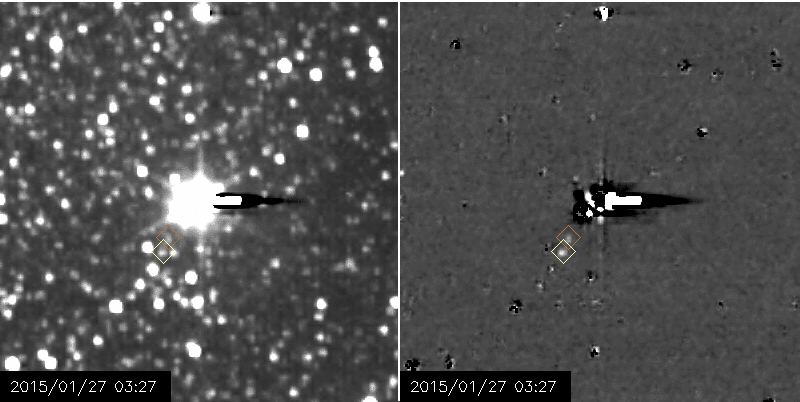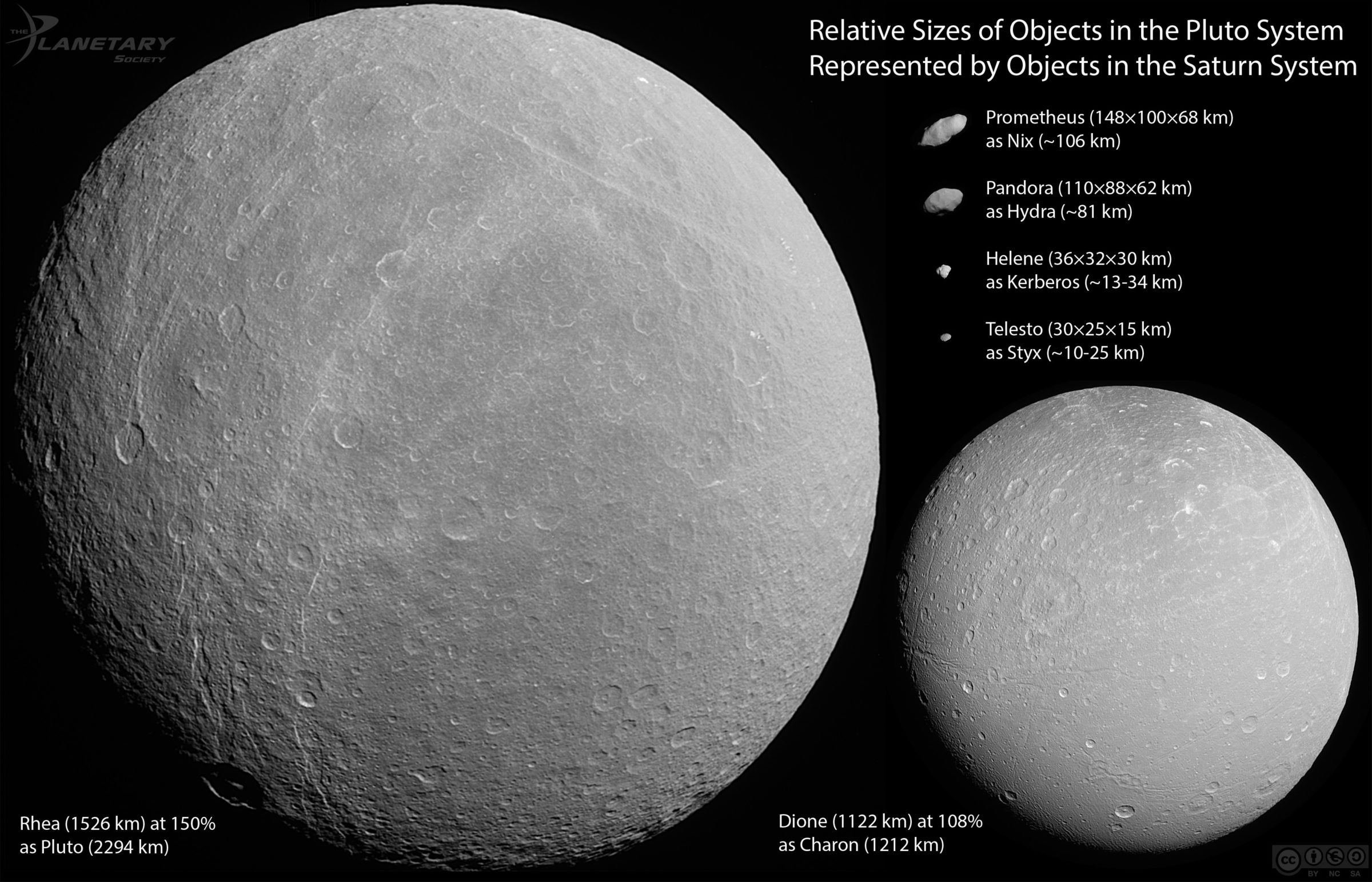Emily Lakdawalla • Feb 18, 2015
New Horizons spots Nix and Hydra circling Pluto and Charon
A series of images just sent to Earth from New Horizons clearly shows Pluto's moons Nix and Hydra orbiting the Pluto-Charon binary. These were not easy observations to make; the moons are tiny and dark, reflecting few photons to New Horizons' LORRI camera. New Horizons is still at a distance where it operates more like an astronomy mission than a geology mission, using long exposures, stacking images, and binning data to detect the faint signals of the little moons from among the background noise. But the moons are unmistakably there:

Nix orbits Pluto and Charon once in 25 days; Hydra, once in 38 days. To make these animations, LORRI was commanded to stare at Pluto for 10 seconds at a time, gathering 5 of these observations every 2 days. At its native resolution, LORRI's camera produces images 1024 pixels square, but the faint signal from Nix and Hydra would not be easy to detect in such images. To improve the signal-to-noise ratio, the original images were binned as they were read out of the chip: 16 pixels were read out as one, producing images only 256 pixels on a side. Binning reduces the resolution of the images, but reduces noise; and binning has the added benefit of reducing the data volume required for these observations. Even at full resolution, Nix and Hydra were just point light sources anyway.
New Horizons will continue to gather these kinds of observations to watch the motions of Nix and Hydra every two days through March 6, seeing a complete orbit of Hydra. Then it will pause for a long period of data downlink. It will pick up the observations again on April 5 and gather data through May 14, again long enough for a complete orbit of Hydra. Although New Horizons cannot yet match Hubble's resolution on the Pluto system, New Horizons can now do what Hubble can't: perform continuous observations. By measuring the positions of Nix and Hydra with respect to background stars in these images, scientists will be able to predict the future paths of the moons with much greater precision, and navigators will be able to target New Horizons with less uncertainty.
Nix and Hydra are much smaller than Pluto and Charon. They are only roughly 110 and 80 kilometers across, repsectively. We don't know what they look like yet, but I'm betting that they are potato-shaped. We'll see when we get closer! New Horizons will obtain much better photos of Nix than of Hydra -- there are many things in the Pluto system demanding New Horizons' attention during the few hours around closest approach, and the New Horizons team elected to characterize a single one of Pluto's smaller moons more completely rather than get less thorough observations of all of them. The best photo of Nix will have a resolution of about 300 meters per pixel, so it will appear about 360 pixels across, while poor Hydra will be seen well-lit at a best resolution of 1.1 kilometers per pixel, only 74 pixels across. Still, that will be enough to resolve their shape, and see if they are globes or potatoes!

The Time is Now.
As a Planetary Defender, you’re part of our mission to decrease the risk of Earth being hit by an asteroid or comet.
Donate Today

 Explore Worlds
Explore Worlds Find Life
Find Life Defend Earth
Defend Earth

